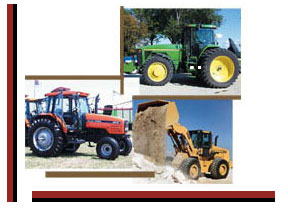Off-Road Fuels EPA Mandated Changes
NRLM – Non-Road, Locomotive, and Marine Fuels
Non-Highway, Off-Road Diesel Fuels
As of June 1st, 2007 refiners and distributors of Non-Road or Off-Highway Diesel, which is designated NRLMwill be required by the US EPA to dramatically reduce the sulfur content in these fuels.
Diesel Fuel which is used for agricultural, power generation, construction, locomotives, and marine will go from High Sulfur (HSD or S-5000) to Low Sulfur (LSD or S500).
This fuel will be more expensive, have far less lubricity (the ability of the fuel to lubricate pumps and injectors), will hold a higher percentage of dissolved water, will have less thermal and oxidative stability, and will cause more repair/maintenance problems for the end user.
There are further compounding problems for distributors and end users of these fuels.
First we need to understand how the law and regulations have been written by the EPA and ASTM regarding sulfur content in fuels.
In all cases regarding these fuels the regulations regarding sulfur content are written to limit the maximum amount of sulfur in each category. A High Sulfur Diesel (HSD, S5000) is limited to a maximum of 5000 ppm of sulfur. A Low Sulfur Diesel (LSD S-5000) is limited to a maximum of 500 ppm of sulfur. An Ultra Low Sulfur Diesel Fuel (ULSD S-15) is limited a maximum of 15 ppm of sulfur. It is important to note that there is no lower limit to these regulations or the corresponding ASTM specifications. This means that a fuel distributor or supplier can legally supply ULSD to a customer and call it ULSD, LSD, or HSD. They are under no obligation to tell the customer the sulfur content is lower.
Red dye indicates that no federal highway use tax has been paid on a given fuel. Red dye tells a used nothing about the grade or quality of any fuel. The idea that red dye indicates heating fuel is mistaken. A red dyed fuel may be heating oil or it may be any grade of diesel fuel.
To make things even more complicated, the EPA believes that a significant number of off-highway fuel users have in the past or may in the future attempt to purchase and use heating fuel for NRLM purposes. To control this problem, the EPA is requiring that starting in June of 2007 distributors in most of the US begin adding a marker dye to heating fuels. This marker dye is referred to as Yellow Dye 124 and will be used at a very low level. The low level being used may not even be visible to the naked eye; however detection devices will easily pick it up. The EPA will then pursue and prosecute the offender(s).
The major refiners in general, do not feel that the volume of NRLM fuel justifies production, transportation, and storage of this fuel. Even if it is available from refiners, most distributors do not have enough storage capacity to stock #2 ULSD, #2 LSD, Heating Oil, #1HSD, #1ULSD, Jet-A, and so on. The result is that in most markets LSD S-500 fuel will not actually be available.
The next surprise is that in many markets, all this has already started. So you may well have been getting ULSD for some time now.
You cannot tell what level or grade of fuel you are getting by looking at it. The equipment necessary to test things like sulfur content, lubricity, Cetane level, etc. costs tens of thousands of dollars and is not practical for field use. There are companies selling various devices that claim to be able to test Cetane level via specific gravity. These devices are not accurate and should not be used.
The lowering of sulfur content in these NRLM fuels will have the following effects:
- The fuel will have significantly lower lubricity. The current ASTM specification for lubricity is HFRR 520 (a lower number is better). This specification is less than is suggested by the Engine Manufacturers Association which is HFRR 460. The engines that have been using HSD have in general been using fuel with HFRR 380-420. This huge change will cause engine seal, pump, and injector problems. The older the engine the more likely it suffer a serious failure. It will require the use of additives to allow the fuel to meet the engine manufacturers required specification.
- The LSD-ULSD fuels will hold more dissolved water. This will lead to more corrosion, more gum, varnish, and carbon deposits in the fuel system and combustion chamber. This water will allow more bacterial and fungal growth in the fuel, it cause more cold weather problems with icing of tanks, fuel lines, fuel filters, and so on.
- These new fuels will have more cold weather problems and they will be much more difficult to treat.
- There will be issues regarding availability and cost of #1 fuels for winter blending.
- The new fuel will be more expensive.
- The change to these new fuels and the changes mandated for segregating fuel oils used for heating will likely cause spot shortages.
- The new fuel is far less stable than the HSD people are used to. Oxidative and Thermal instability will cause problems in fuel stored for even short periods of time. Certain engines that have high returned fuel temperatures may have fuel filter problems due to asphaltene production during operation.
- The new fuel contains 3-4% less energy (Btu’s) per gallon. In many cases there will be noticeable loss of power and economy.
- The new fuel is less viscous (about 20% less) than the previous fuel. This can cause leakage wherever there is an o-ring or hose or pipe connection. This can also allow internal leakage in pumps and injectors.
- The new fuel has lower aromatic content. This leads to seal and gasket shrinkage and makes engines more difficult to start, particularly in cold weather.


